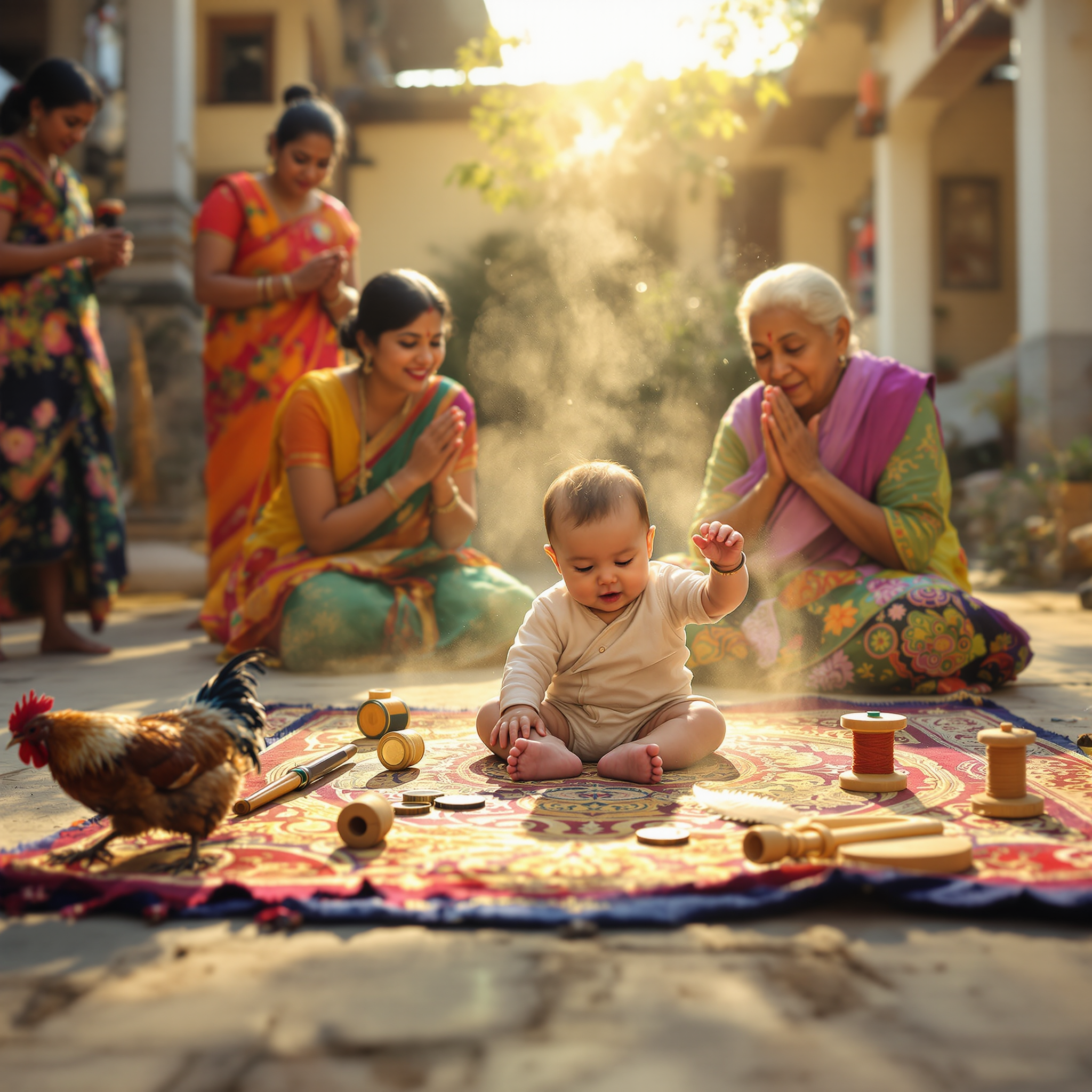This superstition involves placing or tying a pencil into the hand of a newborn infant—typically within the first few days after birth. The practice’s symbolic intent is to bless the child with intelligence, quick learning abilities, and a lifelong inclination towards education and good behavior. In some variations, the pencil may be tied using a soft ribbon or cloth, and the act is accompanied by blessings or prayers from elders or educated family members. The pencil, as a symbol, represents learning, mental agility, and communication. Families who observe this ritual often perform it in private homes, making it a personal rather than a communal tradition. Some beliefs also extend to the color or type of pencil used—favoring traditional wooden pencils for their perceived grounding energies.

A baby’s future career or fate is predicted by the first object they select during a ceremonial setup.
In several Asian and Eastern European cultures, a traditional ceremony is held for babies usually around their first birthday. Known


